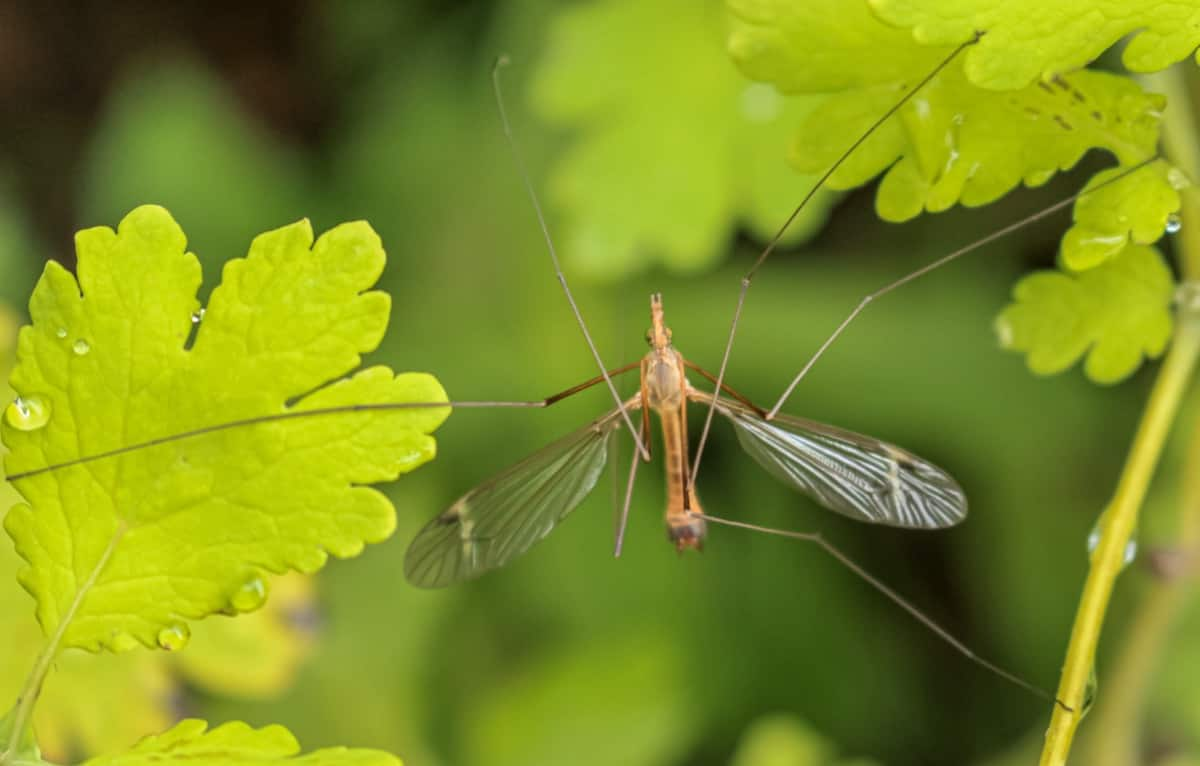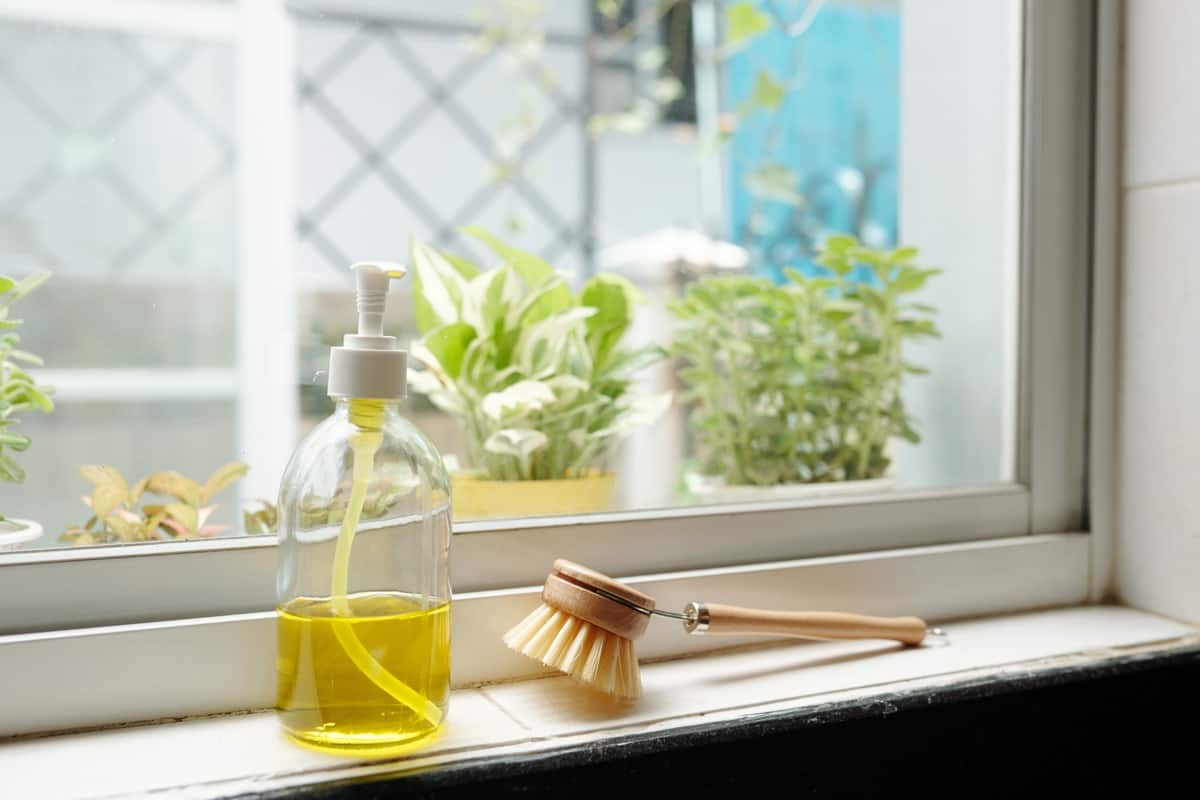Mosquitoes can be a nuisance and also pose health risks. Fortunately, there are several ways to combat their presence in your garden. DIY mosquito traps offer an affordable and effective solution for those who prefer natural pest control. Commercial mosquito traps provide convenience and advanced features for those willing to invest in them.

Preventing mosquito bites is crucial in avoiding the potential diseases they may transmit. Remember that taking measures against mosquitoes protects you and helps prevent their breeding cycle from continuing. Mosquito traps are an effective and environmentally friendly way to control the population of these pesky insects.
DIY Mosquito Traps for Garden
Vinegar and Baking Soda Trap
This homemade trap works similarly to the vinegar and dish soap bottle trap but with more power. Mix white vinegar and water, then add baking soda to the solution. The mixture will fizz up due to the chemical reaction between vinegar (an acid) and baking soda (a base). Place the bowl in your desired location where mosquitoes are most active. As they approach the bowl, they’ll be lured in by the sweet smell of vinegar mixed with their favorite food, sugar. Once they land on the surface of this concoction, they’ll quickly sink into its depths due to its stickiness.
In case you missed it: Baking Soda Miracles In Plants – How To Apply

Camphor
Camphor is a natural substance used for centuries to repel insects. Regarding mosquitos, Camphor can be an effective way to repel them away from your home or garden. Light a few pieces of Camphor and place them in different places in the garden.
The scent of burning camphor will help keep mosquitoes at bay and prevent them from entering your space. However, it’s essential to note that too much exposure to camphor fumes can harm humans and pets. In addition to its mosquito-repelling properties, camphor also has several other benefits. While there are many DIY traps available on the internet today – some more effective than others – using natural substances like Camphor may provide you with an additional layer of protection against pesky mosquitos without having any harmful side effects on you.
Sugar and Yeast Trap
Mix 1/4 cup of brown sugar and 1 cup of hot water in a container to make this trap. Stir the solution until the sugar dissolves, and let it cool down completely. Once cooled, add 1 gram of active dry yeast to the mixture and stir again. Next, cover the container with a dark cloth or paper and secure it tightly with an elastic band. The cloth will help keep out other insects while allowing mosquitoes to enter through small gaps around the edges.
Place your homemade mosquito trap in areas where you often find mosquitoes, such as near stagnant ponds or damp soil. Be sure to change the mixture every two weeks for maximum effectiveness. This simple yet effective method can help reduce mosquito populations in your garden or home without using harsh chemicals that may harm beneficial insects like bees or butterflies.
Beer Trap
This simple DIY mosquito trap is popular among homeowners because it’s cheap, easy to make, and works. The sweet smell of the beer will attract mosquitoes, who will fly toward the dish and ultimately fall in. Once they’re in the liquid, they’ll be unable to escape and eventually drown.
In case you missed it: Expert Lawn Care Tips for Lush Green Garden

While this method may sound too good to be true, it does work wonders when it comes to reducing mosquito populations around your home or yard. Remember that while this method can help control mosquito populations near your home or garden, there are other steps you should also take (like removing standing water) if you want comprehensive protection against these pesky insects.
Eucalyptus Oil
Eucalyptus oil is known for its strong and refreshing scent, making it a popular ingredient in many household products. The strong odor of eucalyptus oil masks the scents that attract mosquitoes, making it harder for them to locate their next meal. Plus, the cooling effect of the oil can also help soothe any bites you may have already received. Add some drops to an essential oils diffuser in your home or patio to use eucalyptus oil as a mosquito repellent.
Vinegar & Dish Soap Bottle Trap
The Vinegar and Dish Soap Bottle Trap is an eco-friendly yet effective solution to eliminate mosquitoes. This trap requires a plastic bottle, white vinegar, dish soap, and water. First, cut the bottle halfway through its body using scissors or a knife. Then fill the bottom half with equal parts of water and vinegar and stir some dish soap into it.
In case you missed it: Stylish DIY Plant Trellis for Pots

The dish soap acts as bait for mosquitoes, while the vinegar attracts them due to its smell. Once they enter the trap attracted by these elements’ scent combination inside, they fall into the liquid mixture below and drown. This trap is efficient because it targets female mosquitoes which lay eggs looking for stagnant water; since our concoction smells like dirty water, they won’t think twice about laying their eggs there instead of standing water around your house.
Fan Mosquito Trap
The Fan Mosquito Trap is a simple yet effective DIY solution to keep mosquitoes away from your home and garden. You only need a fan, some sticky tape, and a cloth. Start by attaching the sticky tape around the edges of the fan blades. Then, drape the cloth over the back of the fan with its corners hanging down towards the ground. This will create a funnel-like shape that attracts mosquitoes towards it.
Turning on the fan creates an airflow that draws mosquitoes into the trap, where they get stuck on the adhesive tape. You can use this trap indoors and outdoors if an electrical socket is nearby. It works best in areas with no breeze or wind to disrupt its function. While this may not be a foolproof way to eliminate all mosquitoes from your surroundings, it’s certainly worth trying out if you want an affordable and eco-friendly option.
Mosquito Killing Ovitrap
A Mosquito Killing Ovitrap is a trap that targets female mosquitoes looking for a place to lay their eggs. These traps use water and an attractant to lure the mosquitoes into laying their eggs in the trap, killing the larvae before they can mature into adult mosquitoes. Find a container with a lid to create your own Mosquito Killing Ovitrap. The container is large enough to hold several inches of water and has room for the mosquito attractant.
Next, mix sugar and hot water until dissolved. Once cooled, add hay or grass clippings as an additional attractant for the mosquitoes. Fill your container with several inches of this solution and place it where you typically see mosquito activity. Make sure to check on your trap regularly and change out the solution every week or so.
Using a Mosquito Killing Ovitrap, you can target female mosquitoes at one of their most vulnerable stages: searching for a place to lay their eggs. With consistent use, this type of trap can help reduce mosquito populations around your home or garden without resorting to harmful chemicals or sprays.
In case you missed it: Growing Mosquito Repellent Plants in Home Garden

Citrus Trap
If you want a natural way to repel mosquitoes, then the citrus trap could be just what you need. Mosquitoes dislike the scent of citrus fruits such as lemons, limes, and oranges. To make a citrus trap, cut up a few pieces of your chosen fruit into small wedges or cubes. Then place them in a shallow bowl or dish.
Next, place the dish where mosquitoes congregate, such as near-standing water or plants. The fragrance will attract mosquitoes, but once they get closer and smell the citrus, they will fly away instead of biting. The best thing about this DIY mosquito trap is that it’s natural and safe for people and pets. Plus, it provides the bonus of leaving your outdoor space smelling fresh and pleasant all summer.
Grow Carnivorous Plants
Growing carnivorous plants is a unique and fascinating way to control mosquitoes in your garden. These plants have adapted to survive in nutrient-poor soil by trapping insects and absorbing their nutrients. One of the most popular types of carnivorous plant is the Venus flytrap, known for its distinctive hinged leaves that snap shut when an insect triggers. Other varieties include sundews, pitcher plants, and bladderworts. You’ll need a sunny spot with plenty of humidity to grow these intriguing plants.
Carnivorous plants thrive in wet conditions, so consider using a tray filled with distilled water or rainwater to keep the soil moist. When feeding your carnivorous plant, avoid giving them processed foods. Instead, allow them to catch small bugs naturally through their traps. Caring for these unique plants can be challenging but rewarding. Proper care and attention can help reduce mosquito populations while adding an interesting element to your garden.
Dish Soap & Light Trap
The dish soap and light trap are one of the simplest DIY mosquito traps you can make at home. You only need a shallow bowl, water, dish soap, and a light source. Firstly, fill the bowl with water about halfway full. Then mix 2 to 3 drops of dish soap into it. Next, place the bowl in an area where there are usually many mosquitoes flying around, such as near bushes or trees.
In case you missed it: Homemade Bug Traps that Catch Unwanted Pests: Benefits of Using Natural Pest Traps

Be sure to also place a bright light source directly above the bowl. Mosquitoes are attracted to light sources so that they will come toward your trap in droves. When they try to land on the surface of your soapy water, they will get trapped and drown due to their inability to move freely. This method works best at night when mosquitoes are most active and when there aren’t too many other competing light sources like street lights or porch lamps.
Tips to Use Mosquito Traps
Using mosquito traps is a great way to repel mosquitoes in your garden. However, using them correctly is important to get the best results. Firstly, place the trap where mosquitoes are likely to be found. This could be near-standing water or plants that attract insects. Additionally, consider placing multiple traps around your garden for maximum coverage. You should regularly clean and maintain your mosquito trap. Empty any collected debris and replace attractants as needed.
This will ensure that your trap remains effective over time. When setting up a new trap, follow the manufacturer’s instructions carefully. Some traps require specific placement or assembly steps for optimal performance. Remember that mosquito traps are just one component of an overall pest management strategy. To reduce mosquito populations in your garden, combine trapping with other methods, such as eliminating standing water sources and using insect repellents outdoors.
Conclusion
Mosquitoes are a common problem, especially during the summer months. They can ruin your outdoor fun and make it difficult to enjoy time in your garden. However, different types of mosquito traps can help you get rid of these pesky insects. There are many ways to make homemade mosquito traps for your garden and home. Remember, consistent use is the key to success with these traps. Place them strategically around your property where mosquitoes congregate, and change the bait regularly.
- Cabbage Seed Germination and Selection
- Broccoli Seed Germination and Selection
- Asparagus Seed Germination and Variety Selection
- Seasonal Flower Gardening: Best Practices for Spring, Summer, Fall, and Winter
- How to Grow Hibiscus from Flower
- Plantation Ideas for Home Decoration: A Beginners Guide
- Flower Garden Designs and Layouts for Beginners
- Planting and Spacing Techniques in Papaya: A Beginner’s Guide
- Growing Gold: Essential Techniques for Planting Pineapples
- How to Make Kalanchoe Plant Bushy: Home Remedies and Solutions
- 11 Reasons Why Your Gardenia is Not Blooming: Home Remedies and Solutions
- Eco Elegance: The Guide to Designing a Drought-Tolerant Landscape
- Gardening on a Slope: Strategies for Hillside Landscaping
- Nourish and Flourish: Top Organic Mulches for Thriving House Plants
- Everything You Want to Know about Indian Mogra Flower: Discover Uses and Growing
- Green Thumb Success: Expert Tips for Cultivating Greenhouse Pumpkins All Year Round
- Maximize Growth & Flavor: The Ultimate Guide to Companion Planting in Herb Gardens
- How to Control Rhododendron Problems Naturally: Home Remedies and Organic Ways to Fix Them
- Natural Magic: The Remarkable Benefits of Cinnamon for Plants
- Best Steps to Revive Dying Tulip with Natural and Organic Treatment
- 10 Reasons Why Your Angel Trumpet is Not Blooming: Remedies and Treatment
- How to Fix Periwinkle Leaf and Flower-Related Problems: Natural Remedies and Solutions
- How to Fix Zinnias Leaf and Flower Problems: Discover Natural and Home Remedies
- Organic Steps to Induce Lemon Tree Flowers: A Comprehensive Guide
- Bloom Booster: Crafting the Perfect Homemade Bougainvillea Fertilizer
- Optimizing Growth: A Guide to Applying NPK Fertilizer for Potted Plants
- 10 Best Homemade Fertilizers for Rubber Plant: DIY Recipes and Application Method
- How to Boost Female Pumpkin Flowers: Effective Steps for More Flowers and High Yields
- Transform Your Indoor Garden: Top Benefits of Pink Salt for Houseplants
- 10 Best Homemade Fertilizers for Peacock Plants (Calathea): Easy DIY Guide
- Unlock Blooms: 9 Reasons Why Your Potted Chrysanthemum is Not Blooming
- 8 Reasons Why Your Potted Hibiscus is Not Blooming: Fix it with Simple Solutions
- Unlock Blooms: 9 Key Reasons Your Potted Frangipani Won’t Flower
- 10 Reasons Why Is My Ice Plant Not Blooming: Remedies and Treatment
- 10 Reasons Why My Potted Hydrangea Not Blooming: Treatment and Remedies
- 10 Reasons Why is My Wisteria Not Blooming: Remedies and Treatment